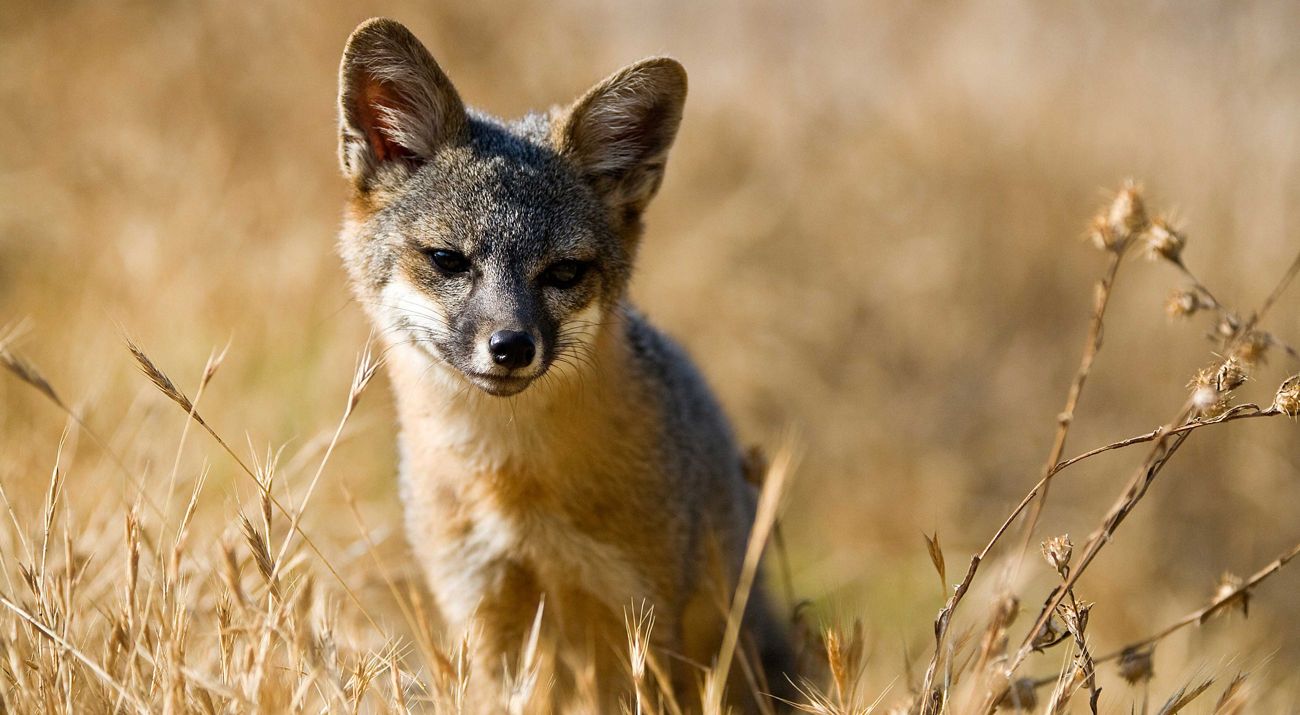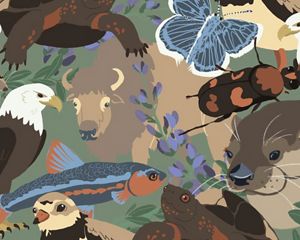Endangered Island Foxes Break Record for Fast Recovery
Thanks to scientific strategy, the Santa Cruz Island fox has rebounded from sure extinction in just a decade.
Outfoxing Extinction
Santa Cruz Island foxes faced bleak odds 16 years ago. But in a win for the tiny gray animals, the U.S. Fish and Wildlife Service announced that the Santa Cruz Island fox, plus two additional subspecies of island fox, have recovered so well that they can be removed from the Endangered Species List, marking the fastest recovery of any mammal under the Endangered Species Act.
The announcement comes after a landmark scientific assessment created by The Nature Conservancy and their partners, which used data to quantify fox health. USFW used the assessment to evaluate the island fox population and declare them recovered.
Quote: Scott Morrison
This is a historic day for the island fox and proves that science-based conservation can save some of our most at-risk species
Disrupting an ecosystem
Until the 1990s, the native four-pound fox—smaller than a house cat—thrived on the small island off the coast of California, free from predators. Revered and culturally significant for indigenous peoples who first inhabited the islands, the Santa Cruz Island fox was the island’s top dog for thousands of years.
Their resulting naiveté makes them appealing to humans but also more vulnerable to voracious new threats.
So when the feral pigs, which attracted non-native golden eagles, began roaming the island, the unsuspecting foxes made easy prey.
When the population catastrophically fell from 1,500 to fewer than 100, The Nature Conservancy—together with the National Park Service, U.S. Fish and Wildlife Service, the California Department of Fish and Game, and the Institute for Wildland Studies —launched the Island Fox Recovery Program, an intensive, science-based recovery effort to save the island fox.

A dramatic recovery
In 2000, TNC and partners began bringing 20 foxes into captivity to protect them from predation and increase their numbers in a captive-breeding facility designed to mimic their natural environment.
After six seasons, 85 pups were produced by the program and released into the wild. As a result of the successful recovery, the captive breeding program was phased out in 2007.
However, the removal of the non-native feral pigs, which was a key component of the restoration program, left some unrest among community members.
Quote: Christina Boser
To remove this extinction-level threat to the island foxes, we couldn’t just relocate the golden eagles; we also had to remove the pigs that were luring them to the island
“We constructed fences that sectioned the island into five hunting zones, and then over a period of just 18 months, highly-skilled professionals removed the pigs from each section.”
The events on the island were so prominent, they were featured in T.C. Boyle’s book When the Killing Is Done.

Restoring balance
With the predators gone, the fox survival rate increased to 90 percent and the population rebounded to 2,150 in 2015—a swiftness that stunned even the scientists and conservationists involved.
“The island fox is a fantastic success story. The lessons that we've learned here are used to guide recovery programs for other endangered and threatened species around the world. We can take the data and the knowledge that we gained here, and apply it to mainland populations as well,” said Boser.
Quote: Christina Boser
As wildlife habitat on the mainland becomes, in some cases, smaller or degraded, we need to know how to manage vulnerable species on the mainland. We can use the island populations to determine how to best do that
The Nature Conservancy continues to track and annually vaccinate wild foxes for rabies and canine distemper—diseases easily contracted from unauthorized domestic dogs brought ashore by boaters. The wild foxes are closely monitored using radio collars and are living happily once again in their island paradise.
“The incredible recovery of this unique four-pound fox is a model not just for island species, but for species everywhere, especially as we factor in the impacts of climate change. The approach developed with our partners shows that science, collaboration and focus are a potent combination for bringing once vulnerable species back to health,” said Morrison.



